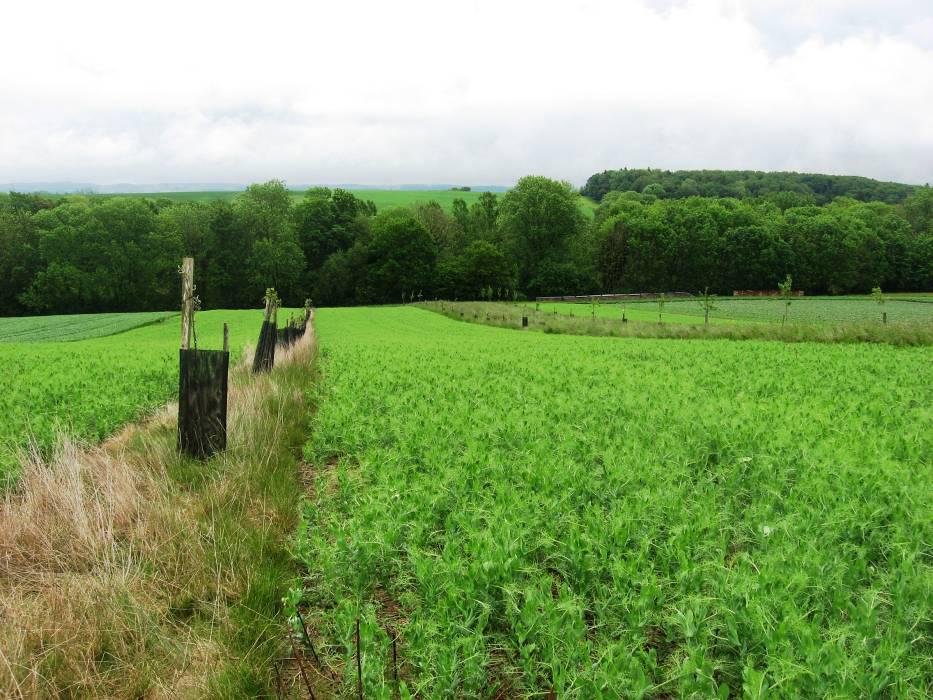
Integrating trees with arable crops, Switzerland
Description of system
Many of the modern agroforestry systems in the German-speaking parts of Switzerland have focused on the use of high stem fruit trees. In the western part of Switzerland, the fields are often larger and minimising erosion and nutrient loss can be important. Building on work in France, farmers in the French-speaking part Switzerland have also focused on the use of high value timber species. One of the systems visited included trees in rows, spaced 29 m apart, including 2 m wide strips of understorey vegetation.
Initial stakeholder meeting
An initial stakeholder meeting, with 22 participants, was held on 27 May 2014. The focus included the establishment and maintenance of valuable timber trees on arable land. Better co-ordination of agroforestry research and extension was recognised as a key area.
If you would like to know about the activity of this group, please contact Mareike Jäger (mareike.jaeger@agridea.ch) or Felix Herzog (felix.herzog@agroscope.admin.ch)
Download the initial stakeholder report
An initial report was provided in November 2014.
Download the initial research and development protocol
A research and development protocol was produced in April 2015.
Download the system description
A progress report on the research including a system description was produced in March 2016.
Lessons learnt
In a report produced in September 2017, Mareike Jäger describes some soil carbon measurements within a seven year old silvoarable trial with apple trees near Lucerne in Switzerland. After seven years, the soil carbon levels within the uncultivated tree rows were greater than within the cultivated alleys. On the basis of some stated assumptions, the silvoarable system (22% of area allocated to trees) was estimated to result in an addition 0.51 tonnes of organic soil carbon per hectare per year in the top 25 cm of soil. Estimates were also made of the increase in soil nitrogen and there were qualitative indications of an increase in the proportion of water stable aggregates in the soil within the uncultivated tree rows compared to the cultivated alleys.